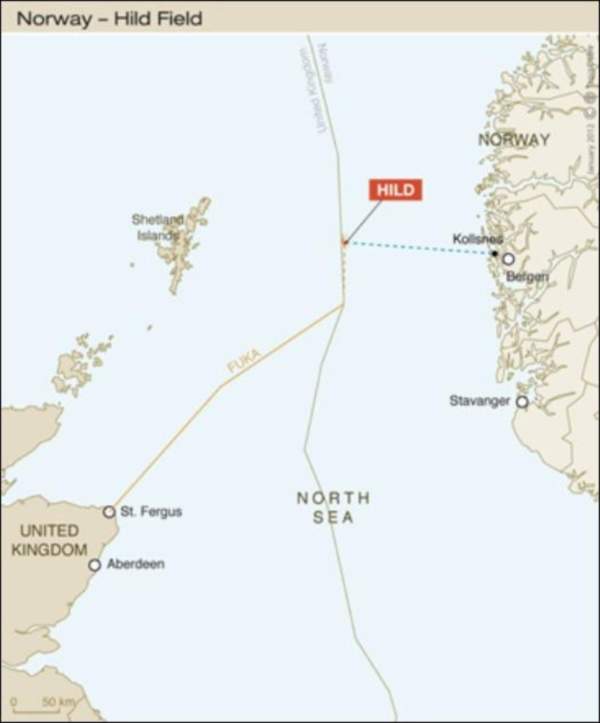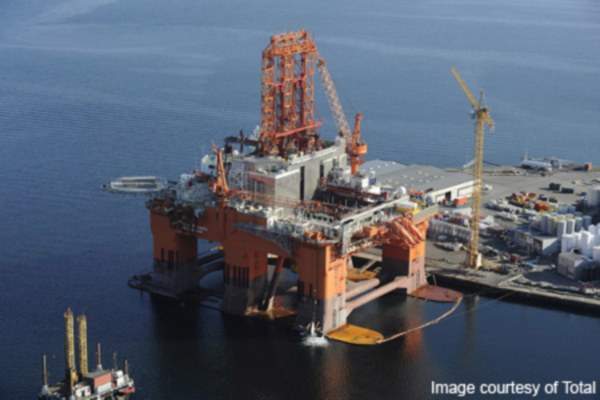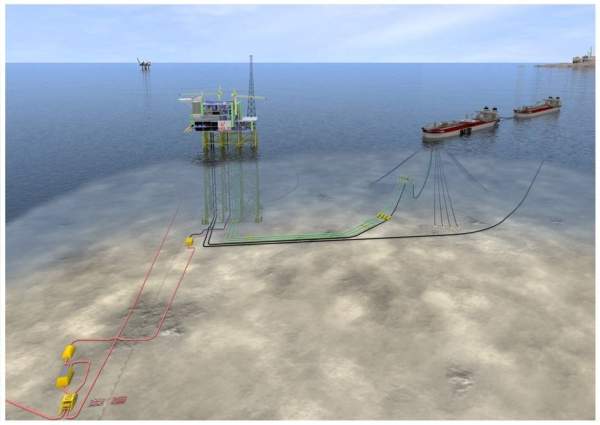Hild oil and gas field is located in the North Sea, Norway. It lies in a water depth of 115m and is the largest undeveloped field in the North Sea.
Total holds a 51% stake in the field and is the operator. Other stakeholders are Petoro (30%) and Statoil (19%). Total launched the development of the field in February 2012. The Plan for Development and Operation, submitted to the Norwegian Government, is currently under review.
First production from the field is expected in the year 2016. Peak production from the field is expected to be 100,000 barrels of oil equivalent (boe) each day. An investment of $4.2bn is being made in to the development of the field.
Norway is the biggest oil and gas producing region for Total, with an average of 310,000 boe a day produced in 2010. Production from mature fields, however, is declining in the region and increasing in Nigeria and Africa.
Total plans to invest in the development of new fields and maximise production at the existing fields in Norway. This will enable the company to maintain production in Norway at 250,000 to 300,000 boe over the next ten years.
Investment in the development of the Hild field is part of this strategy.
Discovery of the Hild oil and gas field
Hild was discovered in 1975 by the 30/7-6 discovery well. Six out of the 12 exploration wells drilled at the field until 1985 encountered hydrocarbons.
Geology and reserves of fossil fuels
The field is estimated to contain 190 million boe, including 5.1 million standard cubic metres (scm) of oil, 16.3 billion scm of gas, 0.2mt of natural gas liquids and three million scm of condensate.
The field reservoir is structurally complex, containing several faulted and segmented blocks of the mid-Jurassic Brent Group. Three reservoirs located at a depth of 3,800-4,000m are high pressure and temperature (HPHT) gas / condensate reservoirs containing 75% of the reserves. Oil is contained in a reservoir of the Eocene age at a depth of 1,750m.
Field development from Total
Development of the field has been idle since its discovery due to structural complexity and poor imaging of the reservoirs. In 2003, a 3D seismic survey was carried out in the area by Petroleum Geo-Services. The survey confirmed that the reservoir was highly faulted and contains gas and condensate at HPHT.
Development of the field became a possibility with the advancement in technology and infrastructure. An appraisal and development programme for the field was formulated based on the seismic survey. Total drilled three appraisal wells at the field using the West Phoenix semi-submersible rig and prepared the field development plan.
The development plan includes installation of a wellhead platform and a floating, storage and offloading (FSO) vessel. Total has designed a sustainable development plan for the field to reduce the environmental footprint.
The platform and FSO will be powered from the shore through a 170km long cable. The cable will include fibre optic links to enable the facilities to be monitored from Total’s base in Stavanger.
Powering the facilities from land is expected to reduce carbon emissions by 200,000-250,000t annually and 2mt over the life of the field.
Total plans to initially produce gas and condensate without pressure support. Oil reserves are planned to be produced later using gas lift.
Hild wellhead platform and FSO
The field will be developed using an integrated wellhead platform designed to operate for 30 years. The topside of the platform will include two modules – the utility and accommodation module and the process and well bay module.
The utility and accommodation module will be supported by an eight-legged jacket and the process and well bay module will be supported by six points.
Liquids produced at the field will be sent to the FSO. The FSO will process the oil to separate water which will be used for reinjection. The processed oil is unloaded onto shuttle tankers. The FSO is expected to have a storage capacity of 620,000 barrels of oil.
Subsea system and exportation of gas and oil produced at the North Sea field
Infield pipelines will include a 12in oil and water pipeline, 12in water return line, 8in fuel gas line and a power and fibre optic line. These pipelines will be installed between the platform and the FSO.
Produced gas will be exported through a 24in, 68km pipeline to the Frigg UK pipeline. The pipeline will carry the gas to the St Fergus gas terminal for processing.
Contractors with a role in developing the Hild field
Aker Solutions was awarded a $37m contract in September 2011 to provide basic engineering services for the topsides and jackets of the wellhead platform, the FSO, turret, mooring and subsea infrastructure. The work is expected to be completed by mid-2012.
In November 2011, Maersk Drilling received an order for two jack-up drilling rigs. The rigs will be able to operate in ultra harsh environments and are being constructed in Singapore. Value of the contract is $550m. Delivery of the rigs is scheduled for 2014.
Grenland Group was contracted in December 2011 to provide basic design of the FSO. Based on the design, contracts for building the FSO will be awarded in the fourth quarter of 2012.










